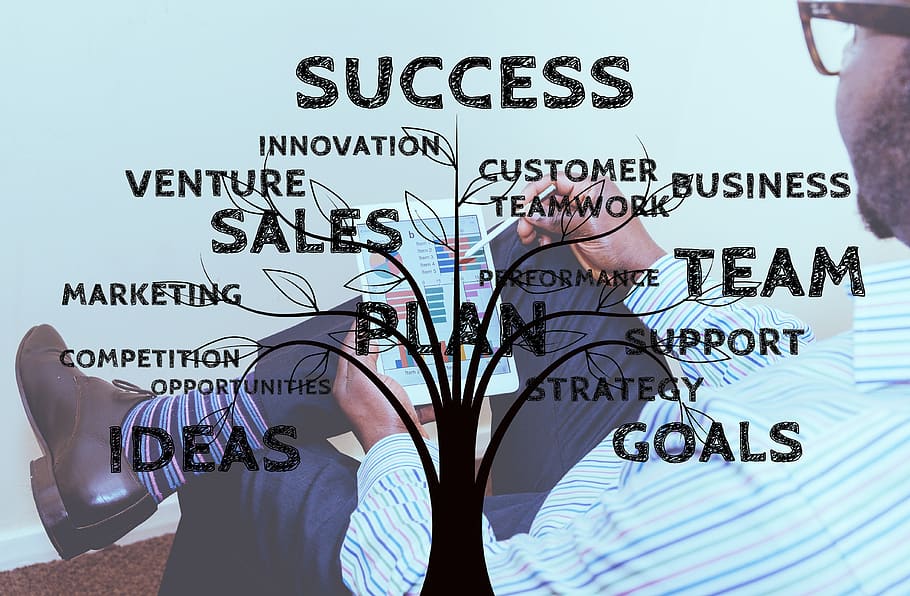
Like rapport, empathy, and bravery, confidence is one of those character traits that may change the course of a situation but is also exceedingly hard to come by. We’ve already failed at being confident the moment we “attempt” to be. We begin to “act” more assured as soon as we do so. Being told to “be more confident” is like to being told to grow taller. Thoughtfully, but how?
The solution to that query necessitates a novel confidence strategy, one that transcends the “fake it ’til you make it!
” mindset and shifts toward something more genuine, grounded, and all-encompassing.
In order to comprehend how confidence functions, how to nurture it, and how to rekindle it when it wanes, we must be clear on what true confidence actually looks like.
Most importantly, we must treat confidence as a dynamic process to be engaged in throughout our lives rather than a fixed attribute to be acquired. My team and I have been working on this process for more than 15 years, most recently through our live training firm, Six-Minute Networking.
Let’s thus begin from the beginning and have a solid understanding of what confidence actually is.
What Exactly Is Confidence?
Although we may not always fully understand textbook confidence, we are able to recognize it when we see it. We are aware of it because we can sense its presence and are familiar with how it feels. This is one of the reasons why it might be challenging to define confidence. Actually, confidence is an experience, both of our own and of others.
We are also aware of our lack of feeling. When someone is insecure—or, perhaps more tellingly, when someone pretends to be confident—we see both their lack of confidence and their clumsy attempts to make up for it.
It’s interesting how often we feel insecure ourselves when around people who lack confidence. We find it difficult to naturally connect, we start to second-guess our words and actions, and we start to realize how awkward, uncertain, and disengaged we feel.
Which, when you think about it, is really intriguing.
One of those uncommon traits that is contagious is lack of confidence. If you lead with genuine confidence, other people will follow your example. But if you show a lack of confidence, they will also show a lack of confidence. If you’ve ever tried to connect with an insecure boss in a job interview or spent time with a confident stranger at a cocktail party, you know how drastically different these two attributes can make you feel.
However, as we all know, confidence is a trait that can be manipulated, projected, or even manufactured. Deep uneasiness can appear to be confidence, as we frequently witness in unstable CEOs and politicians, as well as in suffering loved ones and tentative first dates. And experts keep telling us that if we only make a commitment to speaking, behaving, or appearing a specific way, confidence can be “hacked,” “acquired,” and “taught.”
The strength of our confidence might also seem extremely robust until it breaks down in the face of difficulty, criticism, or failure. In certain circumstances, it appears like confidence is only a transitory emotion, a fleeting faith in our own strength, a brief respite between episodes of self-doubt.
So what really is genuine confidence?
Simply defined, genuine self-assurance that is based on an actual awareness of our own competence, perspective, and adequacy is what is meant by the term “real confidence.”
It’s a dependable link to the reality that we may live our lives as we want, doing what we want to do, feeling how we want to feel, and being who we want to be.
It’s also a feeling that we are sufficient—that there is nothing fundamentally wrong with us that hinders us from moving through life in a balanced, upbeat, and effective manner.
Of course, we all desire to have these traits. A crucial aspect of human psychology is confidence. It makes us feel involved, motivated, and inspired. Without it, we feel lost, cautious, and afraid. Whether consciously or intuitively, we are aware of how crucial confidence is.
However, you undoubtedly know a few people who lack confidence but still succeed in life. You could think that the caliber of your connections, your career, and your general personality come before your own self-assurance. Given that confidence may be altered, inherited, or “switched on” at any time, you could even begin to wonder if it is a trait to be trusted.
Therefore, it would be worthwhile to inquire…
Why Is Confidence Important?
It’s a really good question. For those who are already motivated to strive for it, it may seem painfully apparent, yet confidence does crucial for four important reasons.
1. Quality and achievement are amplified by confidence.
Contrary to what many self-help authorities believe, confidence is not a stand-in for excellence, complexity, or character. It shouldn’t be a goal in and of itself, and it can never be a substitute for genuine hard work. Even the most self-assured individuals need to feel confident about something, such as themselves, their jobs, or their identities, and confidence that is unconnected from its foundation will inevitably crumble eventually.
Instead, we consider genuine assurance to be a crucial component of both our work and character.
Everything we do, say, and communicate to the public has a layer to it, including our job, relationships, ideas, and choices. Confidence feeds the flames of whatever we touch. We will always need to put in the effort to maintain a healthy fire, but without fuel, the fire can only burn for a limited amount of time. You can find a sense of confidence at the heart of any significant and ongoing achievement, from Jay-Z to the iPad, Honey Nut Cheerios to Tesla, Michael Jordan to Walmart.
It’s interesting how many top achievers reject this definition of confidence. They think they won’t require confidence if their job is good enough, their abilities are sophisticated enough, or their personalities are endearing enough. In other words, they think their accomplishments will speak for themselves. which, of course, is true. How well is the query.
Ironically, some of the world’s most accomplished individuals downplay the value of confidence. My observations are based on thousands of conversations with high performers, years of coaching clients, businesses, and the military, as well as my observation that it is precisely their brilliance that causes them to be so doubtful. If the quality of their work hinged on something as nebulous as confidence, how amazing would it truly be? If their personality ultimately determined their success, how would they feel about their talent?
These are troubling inquiries for those who have spent their entire lives being taught to place the highest emphasis on their abilities and performance.
These individuals do not, however, exhibit a complete lack of confidence. Contextual assurance is what they possess. They truly do have a certain level of confidence within the restricted framework of their specialization or world—coding, writing, statistical analysis, business development, team meetings. A crucial kind of confidence that results from experience, hard work, and perseverance.
But outside of that setting, they falter. They lack the kind of all-encompassing confidence that permeates everything they do in and around their job, including how they present their deliverables, interact with various partners and collaborators, and maneuver their careers in the larger context.
They frequently increase their efforts in the areas where they do feel assured due to this lack of overall assurance. As a result, they continue to operate within their comfortable confidence bubbles, concentrating on the positions and silos in which they feel the most competent. This ensures that they won’t take on novel tasks or circumstances that would expose their lack of overall confidence.
Recently, Nate, a network architect at a cloud security business with extraordinary talent, participated in our live training course. He thought it was time to finally seek out some more assistance after years of doing excellent job with little acknowledgement and no significant promotions.
He explained to me why he had been dreading the process so much after finishing the relationship-building, self-analysis, and practical exercises training. Subconsciously, he was aware of his severe lack of general confidence and the fact that the more proficient he grew in his technical function, the less he desired to work on any perceived personality flaws.
But the change was worthwhile. He came into the program as an engineer with a modest, humble, and generally avoidant demeanor. He emerged from the program with an animated, sociable, inquisitive personality who clearly loved it.
A few months later, Nate sent me an email with an update on his life. After six weeks of being back at work, his bosses started to express their appreciation for his performance at team meetings. Even if it was always substantial, people suddenly appeared to pay attention to his contributions, perhaps as a result of the manner in which he was now delivering it. Soon after, his coworkers also noticed a change—not only in his technical job but also in his approachability, eagerness, and personal flair. Prior to a significant rollout, he was given the opportunity to lead his team, and this helped him get two more job offers from rival businesses.
Nate’s work life had entirely changed, as if by magic. It wasn’t magic, though. He had reached a career plateau a few months previously by concentrating only on his deliveries. He started creating the exciting chances he had always desired the minute he started working on himself. He possessed confidence in himself, which accentuated his good job.
Nate’s story serves as a reminder that self-assurance may be actively developed. They also serve as proof that confidence counts. And it counts most when it is formed in tandem with effort and significant content.
Whether we like it or not, the caliber of our work will never be enough to move us forward. However, when that trait combines with genuine assurance, our work acquires a new level of quality and starts to have a far stronger emotional impact on the audience.
2. Influence and leadership depend on confidence.
As we just saw, both what we do and how we do it determines how successful our professional lives are.
Our work requires technological expertise. Our method depends on our level of confidence.
Our level of influence and level of leadership are two of the most crucial factors in how that works. True confidence is necessary for our ability to influence our partners, govern our organizations, and affect our work outputs. These self-assuredness-inspiring abilities are what set technicians apart from managers, workers from leaders, and craftsmen from creatives.
Selby, a producer at a significant radio station, recently visited our program to focus on these abilities. She was a very shy lady who was exceptional at her profession, as she informed us on her first day. She spent her days scheduling famous people as guests, but when they came at the station, she was overcome with acute fear. She adored her coworkers, so when she discovered that they routinely assigned her work knowing full well that she was unable to refuse, she was distraught. She had constantly performed well behind the scenes for four years, but she hadn’t advanced through the station’s ranks.
Selby returned to the workforce after finishing the program. She kept doing the exercises we provided her, and she utilized them to get along better with the famous individuals she encountered. She overcame her reluctance of establishing limits and started outlining her expectations for her coworkers. As a result, the station’s output soared. Six months later, she was elevated to manager of the whole station as a consequence of these (and several other) tools and attitudes. She was awarded her own program a year later.
Selby’s performance was different, but it wasn’t due to skill or willpower. She didn’t get more knowledgeable, talented, or devoted. She connected with her self-assurance. And that self-assurance gave her access to a range of abilities that had previously evaded her, including politics, leadership, and lighthearted banter.
3. Style alone does not equate to confidence. It also pertains to substance.
The tale of Selby serves as a further reminder of the close relationship between conviction and substance. A lack of confidence in a regular person is never easy, but a lack of confidence in someone who is actually talented can be fatal.
Why?
Because a discrepancy in your level of confidence and the caliber of your job may actually accentuate a deficit.
Even if your job is successful, it will just serve to underline how insecure you are. However, your partners and coworkers will anticipate a level of confidence that matches how excellent your work is, and they will be even more dissatisfied if they don’t get it.
People frequently start to question if the work is as solid as it once appeared once they notice that gap. This can lead to a hazardous feedback loop where you start to question your ability to judge the quality of your own work. Insecurity will result in fresh sentiments of uncertainty, dread, and bewilderment that will eventually permeate your decisions. Your strong contextual confidence will start to wane, and it will start to spread your weaker generalized confidence.
Therefore, there is a direct connection between these two sorts of confidence. Despite our best efforts, we are unable to achieve without both sorts of confidence, which are necessary for both producing and profiting from your job.
4. We are protected by confidence.
One of the most powerful tools we can cultivate in a society that is becoming more complex and competitive is confidence. However, because it shows the outside world just how vulnerable we are, lack of confidence is also one of our biggest weaknesses.
Our body language, vocal intonation, verbal signals, and micro-decisions are just a few of the extremely noticeable ways that confidence appears, as we’re going to discuss in more detail. We can’t truly disguise how we feel about ourselves, no matter how hard we try. Everywhere we go, we make our shortcomings known.
We display our lack of self-assurance like a badge, and that badge instinctively dictates how other people should interact with us.
Unluckily, there will always be some people willing to take advantage of those flaws. That openness can sometimes lead to very trivial problems, such as a shady cab driver giving us a trip off the meter, a skilled insurance salesperson upselling us to a higher rate, or a narcissistic buddy monopolizing our attention. Other times, our vulnerability will land us in even worse situations, such as when a predatory lender forces us to take out a risky loan, a controlling relative manages our money and well-being, or a ruthless management takes advantage of us at work. Of all, there is always the chance that things may get much worse.
You can definitely recall a time when you were taken advantage of while you were feeling insecure if you take a moment to reflect. That wasn’t a mistake. Your level of confidence at the time exposed you to that circumstance, and your attitude toward your confidence affected how you handled it.
You could have learned from that event and gained more self-assurance going forward. Or it can have validated your innermost self-perceptions, leaving you open to a future incident that is similar.
Therefore, confidence not only improves our job and character but also aids in our physical and mental safety. Working on it is important because of this. Not simply fashion and outward looks are being discussed. We’re discussing the fundamentals of who we are, how we show ourselves to the outside world, and how that affects how the outside world will treat us.
After understanding the importance of confidence, let’s examine some useful guidelines and methods for developing it.
How Can I Boost My Confidence?
As we’ve already mentioned, it might be challenging to define confidence. It might be challenging to explain this idea because it is more of a dynamic experience than a static feature.
According to our experience, the greatest method to develop confidence is to focus on its component parts—the behaviors, traits, and attitudes that produce genuine self-assurance. Then, using those components together, we may instill genuine, long-lasting, widespread confidence.
beginning with…
1. communication that is nonverbal.
As we just mentioned, our bodies are the primary means by which confidence is exhibited. No matter how effectively we talk, our posture, walk, hand gestures, and facial characteristics always reflect how we feel about ourselves.
Other individuals pick up on these indications viscerally and rapidly since they are nonverbal and avoid the more cerebral language centers in our brains. When we enter a room, they get a clear impression of our inner assurance.
People will instantly regard us as confident if we go into a room with our shoulders back, chins up, and eyes open. They will instantly recognize us as insecure if we arrive with our shoulders slumped, brows wrinkled, and eyes averted or gazing at the ground (if they notice us at all). They do this in milliseconds, precisely like how we judge people.
Body language is a crucial component of making a good first impression because of this. We must always keep in mind that first impressions are formed when people see us, not when we first engage with them. We cannot just activate our confidence when we feel that we require it since we have no control over when it will occur. Every instant, we must absorb and embody it in order for it to become a part of our perceptible presence everywhere we go.
To do that, we advise using the doorway exercise, a quick trick that will make you constantly scan your body language. The practice is standing up straight, pulling your shoulders back, uncrossing your arms, and looking up and forward each time you approach a doorway. These are signs of good body language, which reflect and bolster self-assurance.
We frequently advise our students to stick post-it notes at eye level at their workplace and home doors in order to assist them develop this habit. They are reminded to monitor their body language each time they encounter a post-it note. The post-its are no longer required after a few of weeks. They develop a habit of assessing their body language everytime they pass through any doorway in the outside world as a result of the visual indication.
Although it could appear to be superficial—after all, it’s about how confident one appears on the “outside”—body language is actually incredibly profound. Because while body language influences confidence, confidence itself also has a significant impact on body language. When we act with confidence, we educate our body to feel confident. We encourage the tendency to conduct oneself that way in public the more confident we grow.
One of the wonderful things about body language is that it may truly change the causes of confidence by addressing its symptoms.
Decide to use assertive, uplifting body language, and make an effort to develop routines that will make your nonverbal communication habitual. When you meet new individuals, pay attention to their confident body language and think about adopting such traits yourself.
Most essential, pay attention to how your nonverbal communication affects how you feel in social settings and how other people perceive you. How much of our confidence is based on the things we don’t say will astound you.
2. Tone of voice.
Our speech is the most potent expression of our confidence after our body language. Vocal tonality, which comprises our pitch, articulation, syntax, loudness, and purpose in addition to the physical quality of our voice, reflects and reinforces our deepest sense of self.
Although vocal tone is famously difficult to teach in an article, we can discuss several important methods for enhancing this aspect of confidence so that we may utilize it to boost our self-assurance.
Speak in assertions rather than inquests.
You undoubtedly aren’t unfamiliar with the high rising terminal, commonly referred to as “upspeak,” which is the propensity to conclude sentences with a rising pitch intonation, as if asking a question. However, you might not be aware of how much intonation affects our confidence, both actual and perceived.
When we phrase statements as questions (e.g., “Hello, my name is Steven,” “I’m applying for the content manager post in marketing,” “I’ve been working here three years,” etc.), we quietly convey the ambiguity, uncertainty, and lack of knowledge that questions imply. Upspeak may negatively impact our ability to be hired, jeopardize our prospects of advancement, and change how people view our power and authority—which is terrible because many of us do it out of courtesy and a desire to be understood.
Making use of a straightforward visualization exercise is one of the greatest methods to smooth down the high-rising terminal. Consider a phrase as a hill that emerges from the ground, reaches a peak, and then slopes back down. When we use upspeak, we come to a standstill at the crest of that hill, leaving both the listener and ourselves in a subtly unsettled position. Impose the mental image of the hill onto your statement as you speak, and make the commitment to descend the other side. As a result, your audience will be able to rest in the declarative conclusion that conveys confidence, and as you talk more, your confidence will grow.
speak clearly and distinctly.
As our words develop in our mouths, how we handle them is a measure of our level of confidence. We should also make a commitment to emphatically articulating and enunciating our words in order to boost our conversational confidence. When we act in this manner, we exude confidence to those around us. Additionally, we train our bodies to exude confidence as we talk more.
Try reading a chapter from a book with strong dramatic flair while holding a champagne cork in your mouth. Champagne corks are bigger than regular corks. Your mouth will get really eloquent because you’ll have to work extra hard to get the cork to cooperate. Enunciating clearly will cause you to emotionally connect to your words and take them more seriously, which is, of course, a sign of confidence.
Stay away from superfluous words.
The use of filler words like “like,” “uh,” and “so” also significantly affects confidence. While we don’t think you need to completely eliminate them in order to be taken seriously—if used correctly, these words may actually make your speech friendlier, more casual, and more natural—we do think that when they become a crutch, filler words tend to weaken our authority.
We frequently use filler words to fill up pauses in speech. We frequently do this because of an unconscious fear that if we pass over control to the person we’re speaking with, we’ll lose control of the discussion or be held accountable for any gaps (“So… yes, I mean, what do you think about the new, um… the new project?”). However, as we all know, having confidence involves having faith in the power of our own words and actions. It also entails having faith in the other person’s ability and responsibility to lead a conversation. By eliminating these filler words from our speech, we cease covertly bolstering our lack of confidence and communicate to the other person that we believe they are confident.
Of course, we qualify our discourse with filler words as well. Sometimes we do this intentionally, but more frequently we do it unconsciously, which has a similar impact on our confidence—and how people perceive it—as upspeak does. Filler words may have a significant impact in team meetings, pay discussions, and dispute resolution in a professional setting.
Making a recording of your own talk might be a useful practice for removing filler words. You may record a meeting or your half of a phone call using the voice memo app on your phone (or any other traditional recording device). Examine how frequently filler words appear in your everyday speech by listening to the audio for a few minutes each day for a week.










